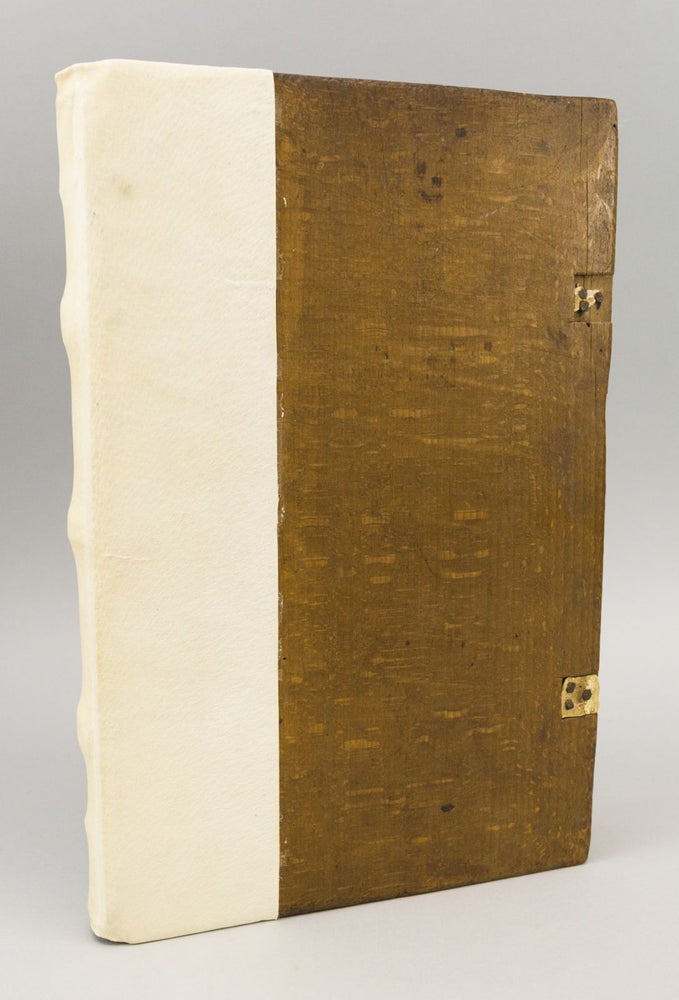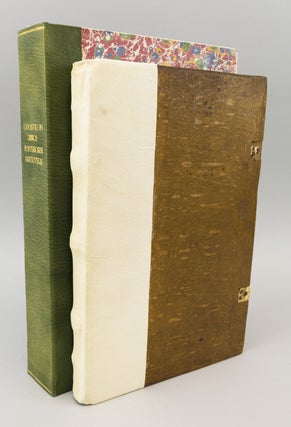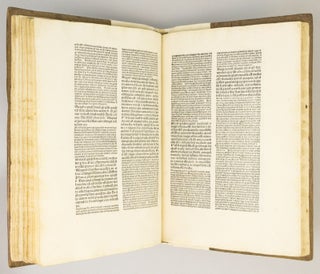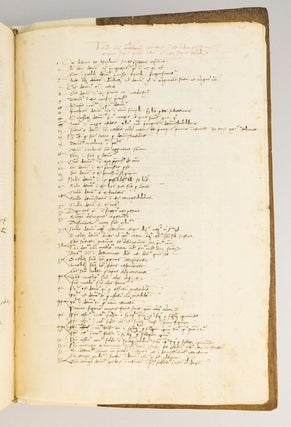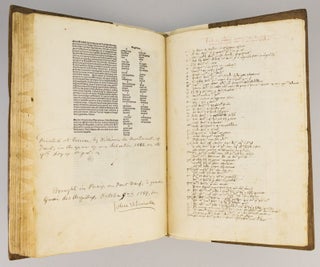EXPOSITIO IN LIBROS POSTERIORUM ARISTOTELIS.
(Venice: Guilelmus Anima Mia, Tridinensis, 11 August, 1486). 327 x 216 mm. (12 7/8 x 8 1/2"). Textually Complete. 116 (of 118) leaves, lacking initial and terminal blanks (two additional leaves tipped in at the back containing a manuscript table of contents in a late 15th or early 16th century hand). Double column, 70 lines of text in gothic type.
Original oak boards backed by modern white pigskin, raised bands, remnants of clasps. Lacking original pastedowns. In a marbled paper folding box backed with green morocco. Neat, brief contemporary marginalia by two hands in red and black, mostly confined to the first 50 leaves (one of these hands probably by the creator of the "Tabula" at the back); 19th century English ink ownership inscriptions by John W. Puricelle (or Duricelle) at front and back, the latter translating (with errors) the colophon and documenting the purchase of this volume in Paris on Quai des Augustins on 9 October 1869. Goff P-214; BMC V, 410; ESTC ip00214000. ◆Rear board with thin five-inch crack starting at head, opening leaf with shallow chip at fore edge, first gathering slightly thumbed, occasional minor foxing or ink smudges, otherwise an excellent copy, the binding scarcely worn, and the leaves generally clean and still crisp enough that they crackle when you turn them.
The first work independently printed by Anima Mia, this is an important commentary on Aristotle's "Posterior Analytics" by the leading logician of the Middle Ages. Scholastic philosopher Paul of Venice (1368-1428) was an Augustinian hermit and the period's foremost authority on Aristotle, producing seven expositions on the philosopher's works. Here, he discusses a portion of the great treatise "Organon" that examines how we demonstrate truth and define the nature of things using logic. The Latin text of Aristotle's work, translated by Jacobus de Venetia, is also included. This commentary was first printed by Venetian Theodorus de Reynsburch in 1477, and ours is the third of five incunabular editions (all printed in Venice) listed by Goff. Our printer identifies himself in the colophon as "Guiliermus de monteferrato tridinenses" (i.e., William of Trino, a municipality in the Duchy of Monferrato in the Italian Piedmont region). But he also called himself Anima Mia ("My Soul") and is identified that way by Goff and BMC. Active from 1485-99 and first noted by BMC as the partner of Antonello di Barasconi in 1485, he appears here for the first time under his sole imprint. He produced just over 30 works, mostly on his own, issuing texts in a variety of fields including theology, grammar, logic, scholasticism, the classics, and science intended for an unusually wide range of humanist and student readers. The original oak boards have held up over the centuries, and the lack of trimming to the marginal annotations confirms that the wide margins have not been disturbed. All editions of this work are rare in the marketplace: until a copy sold for a hammer price of £8,500 ($11,847) in 2021, none had appeared at auction since 1984. (ST12263)
Price: $9,500.00

